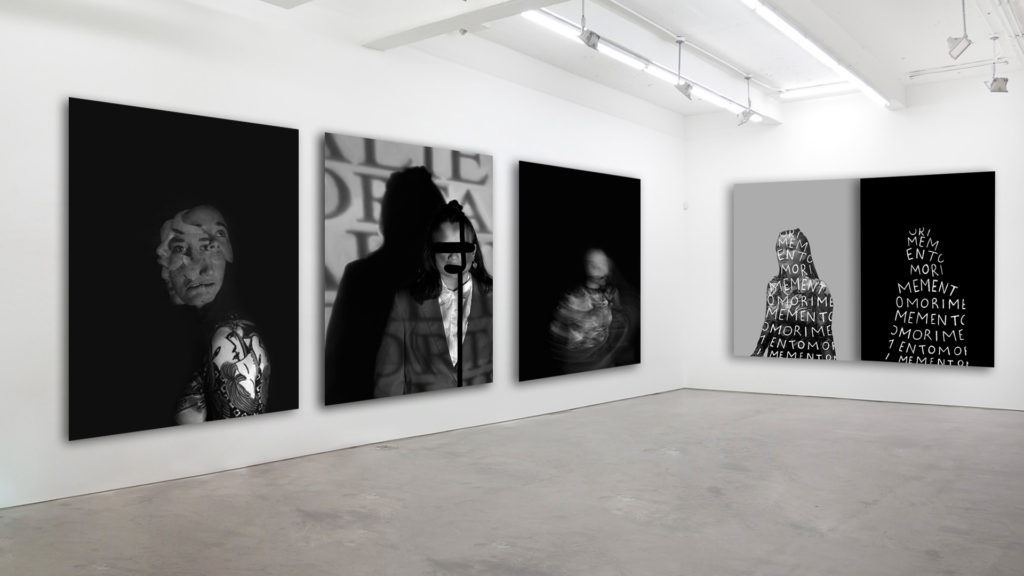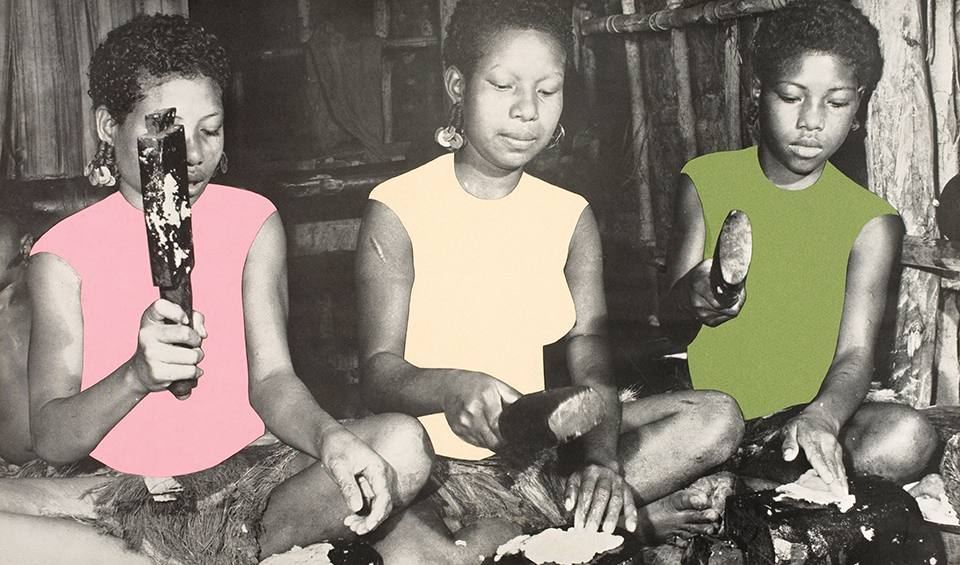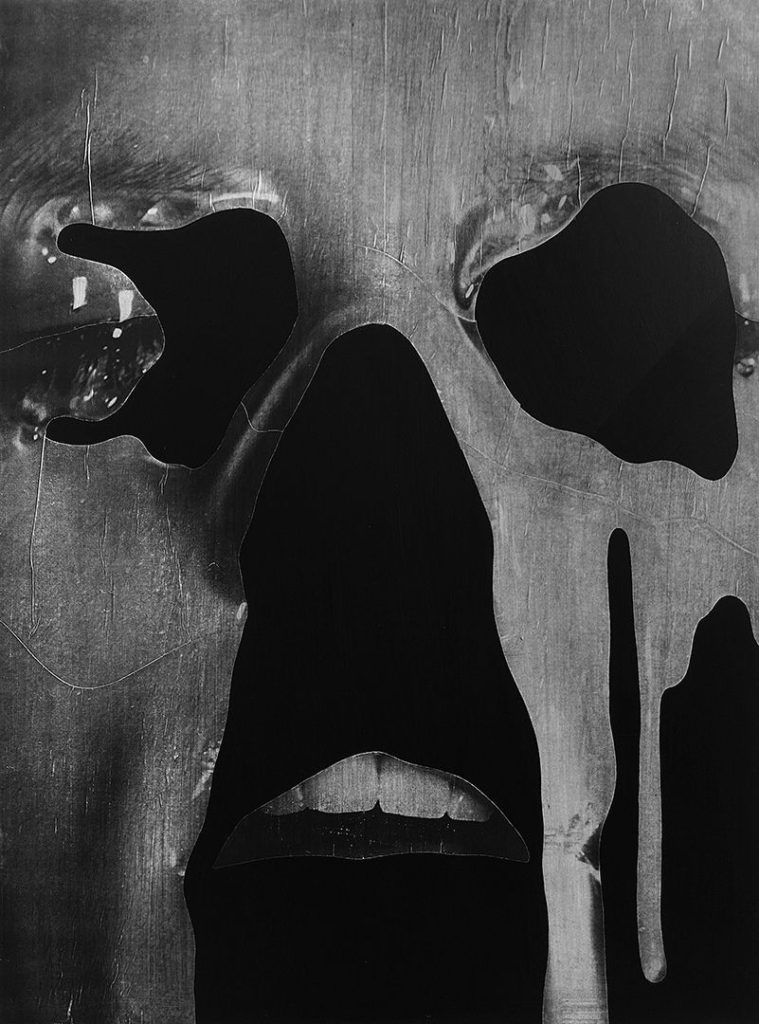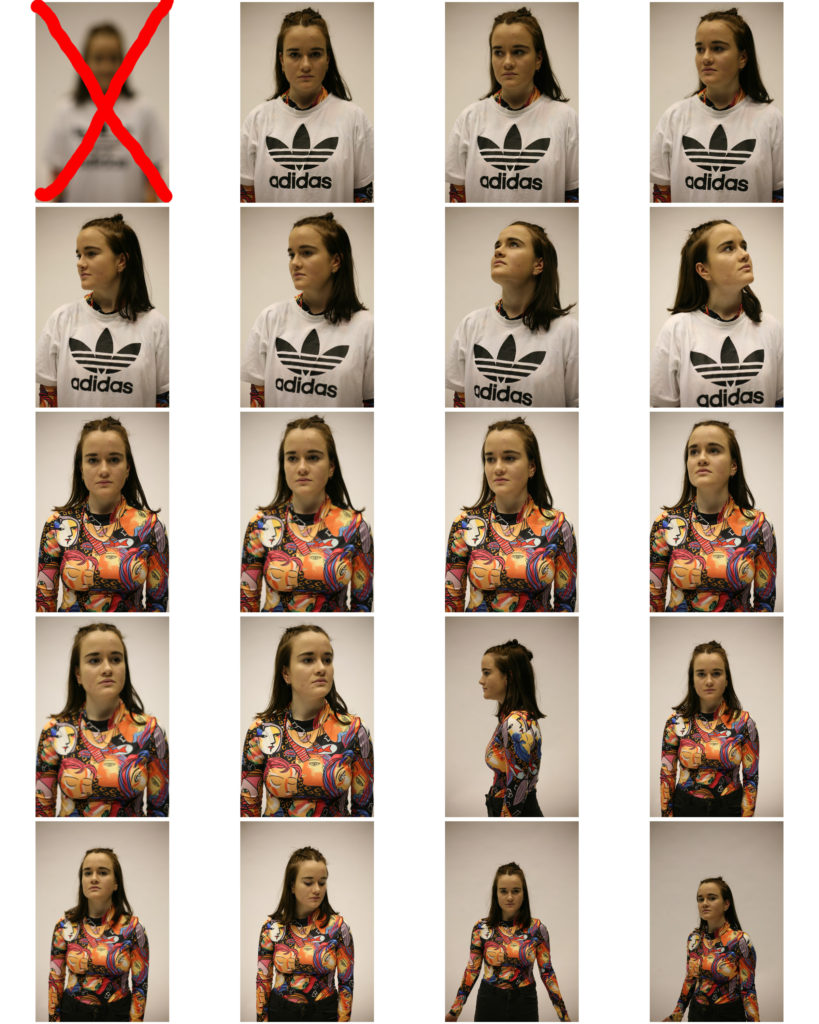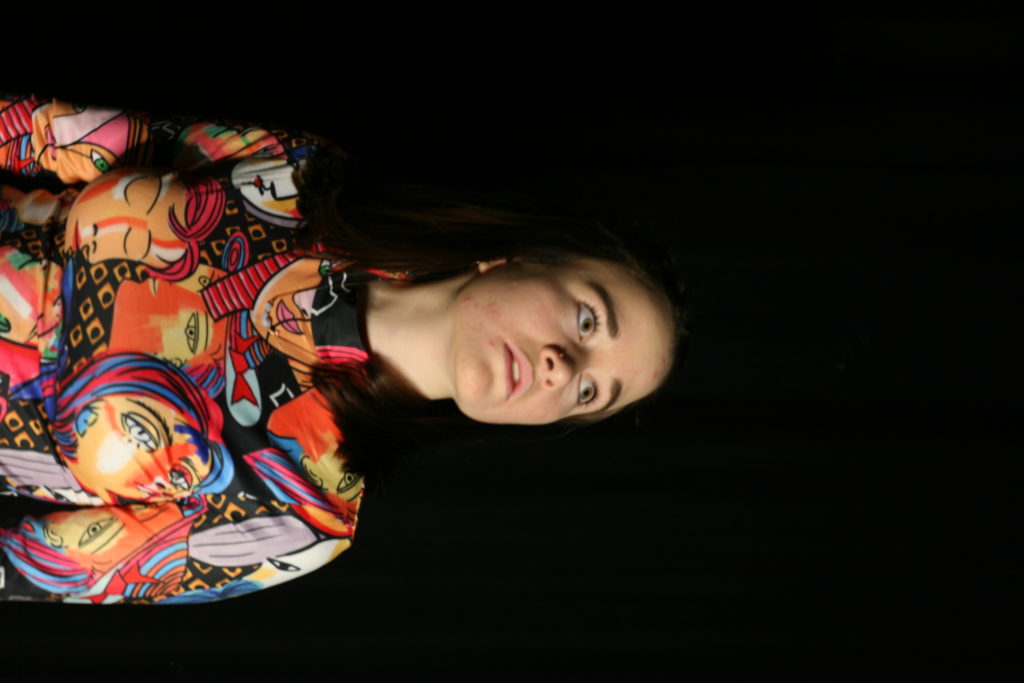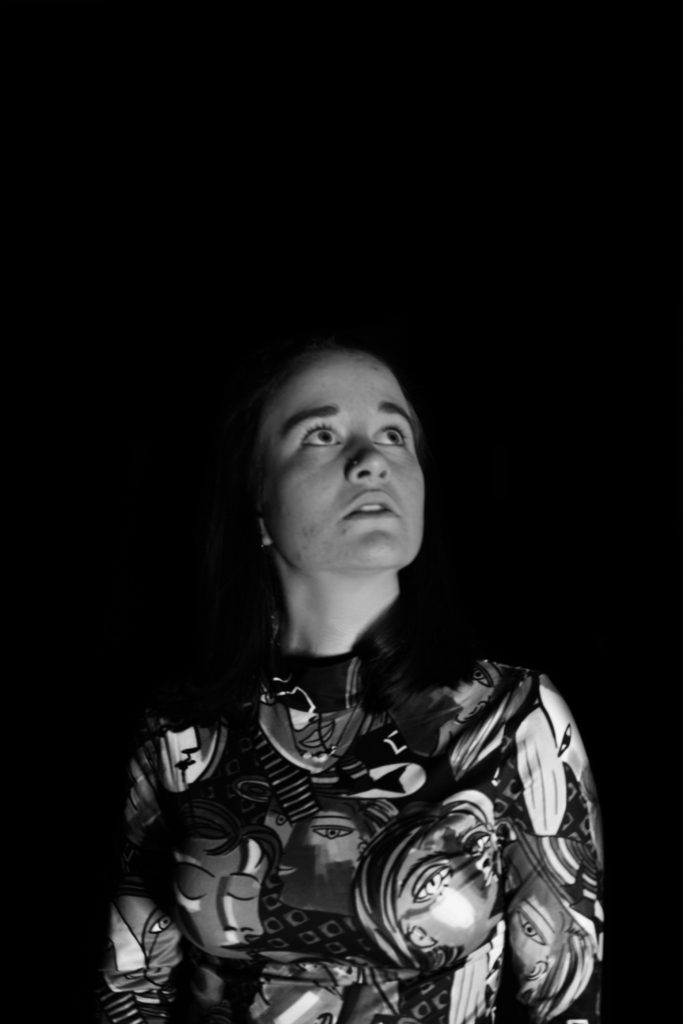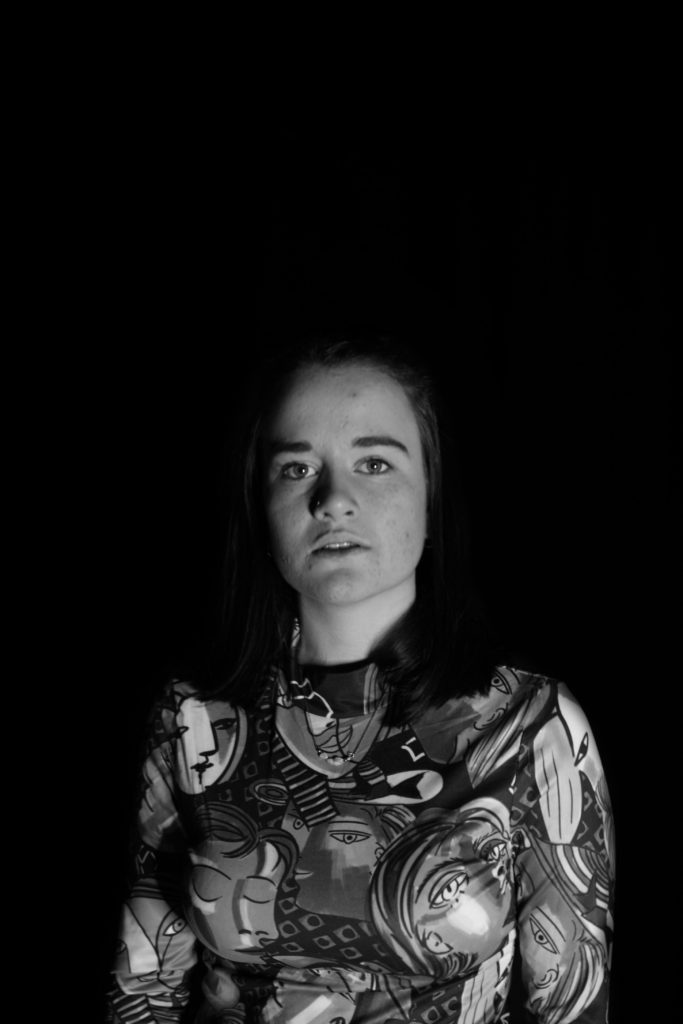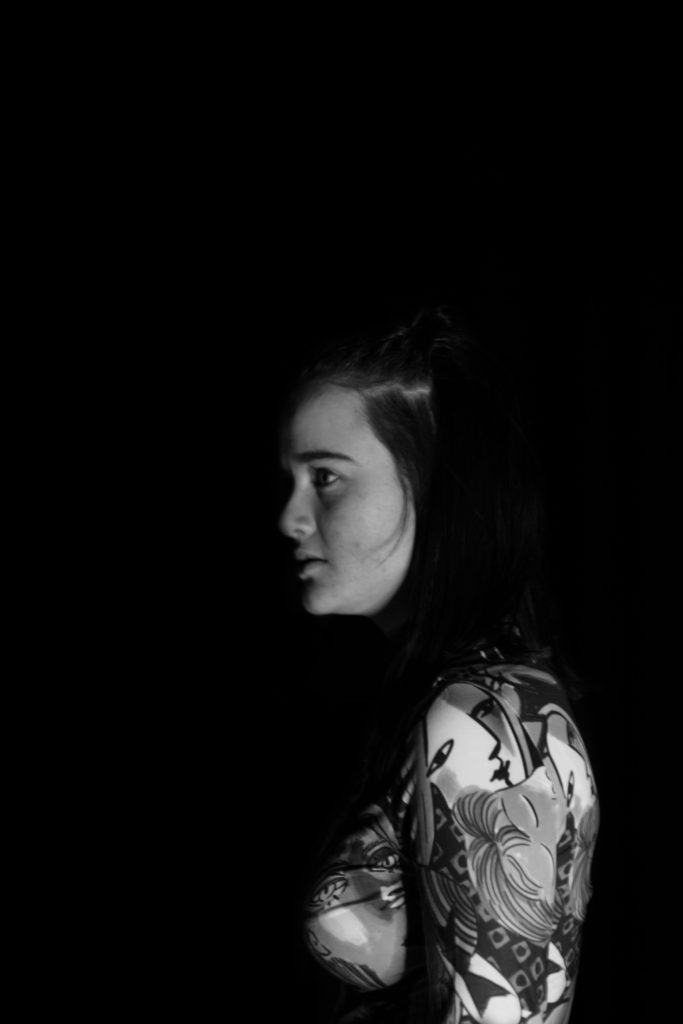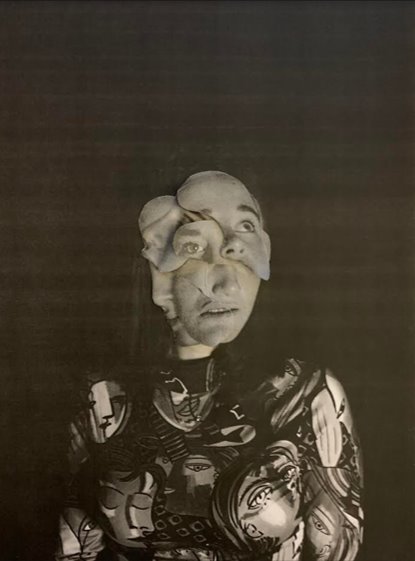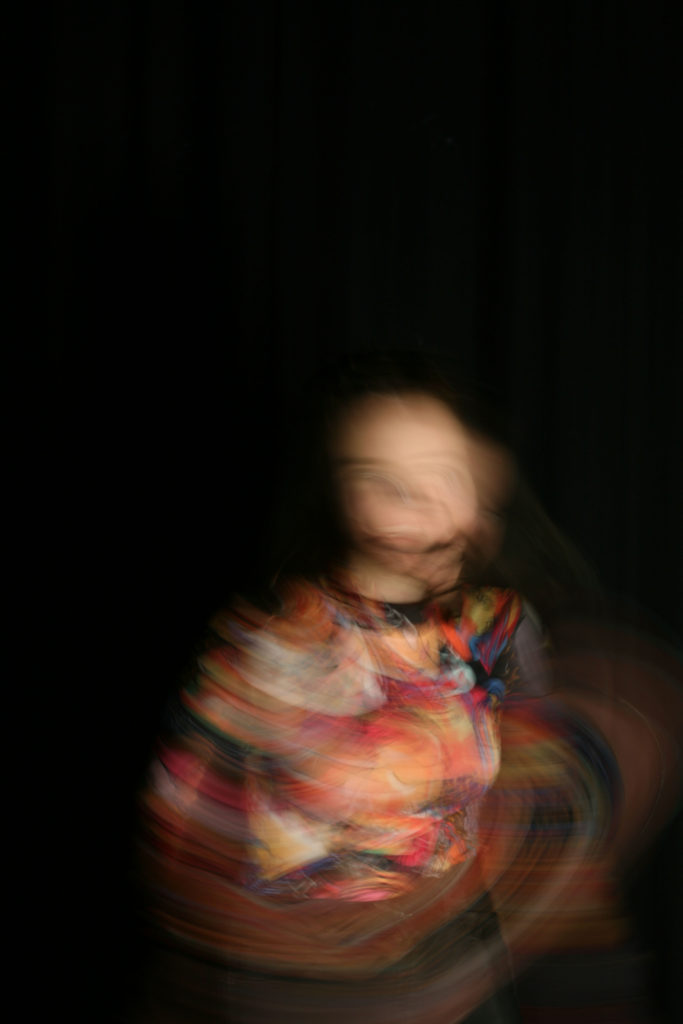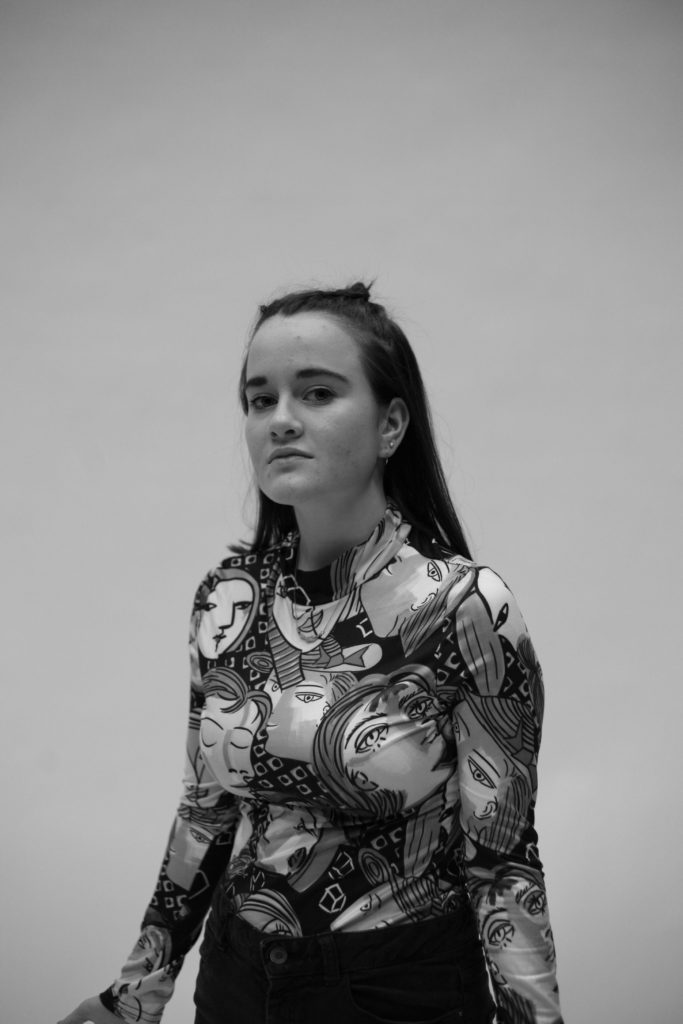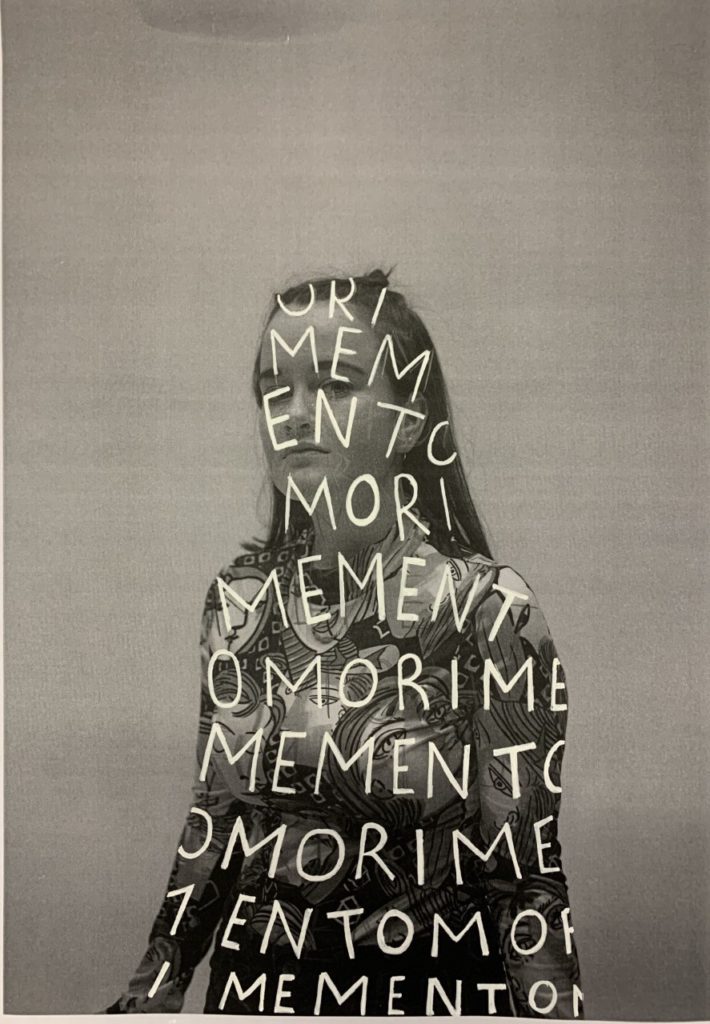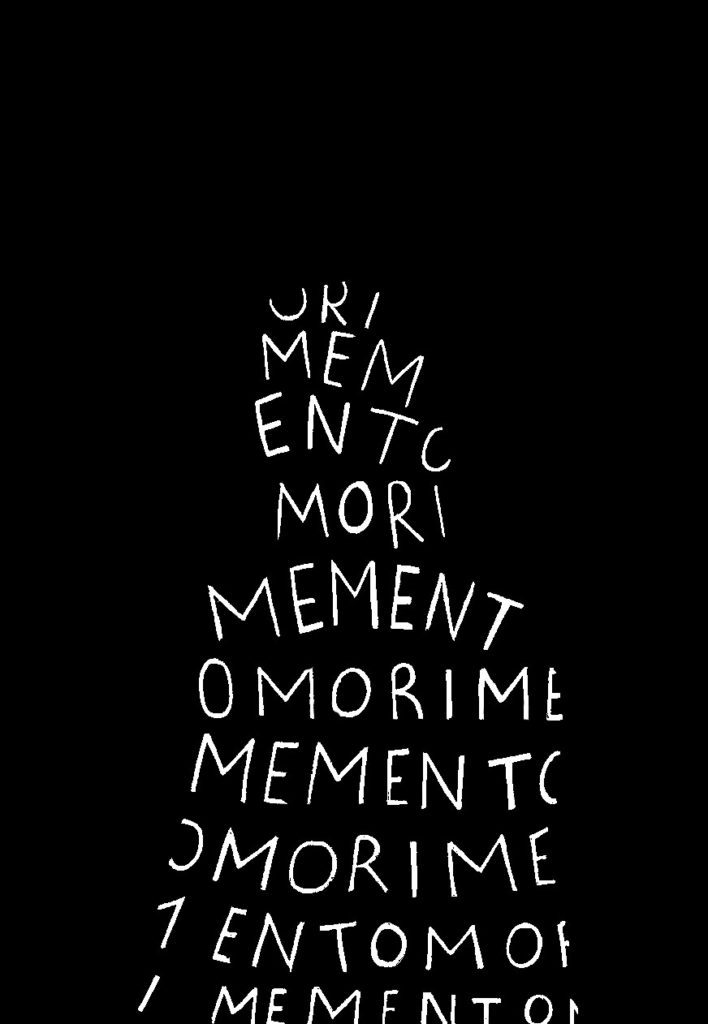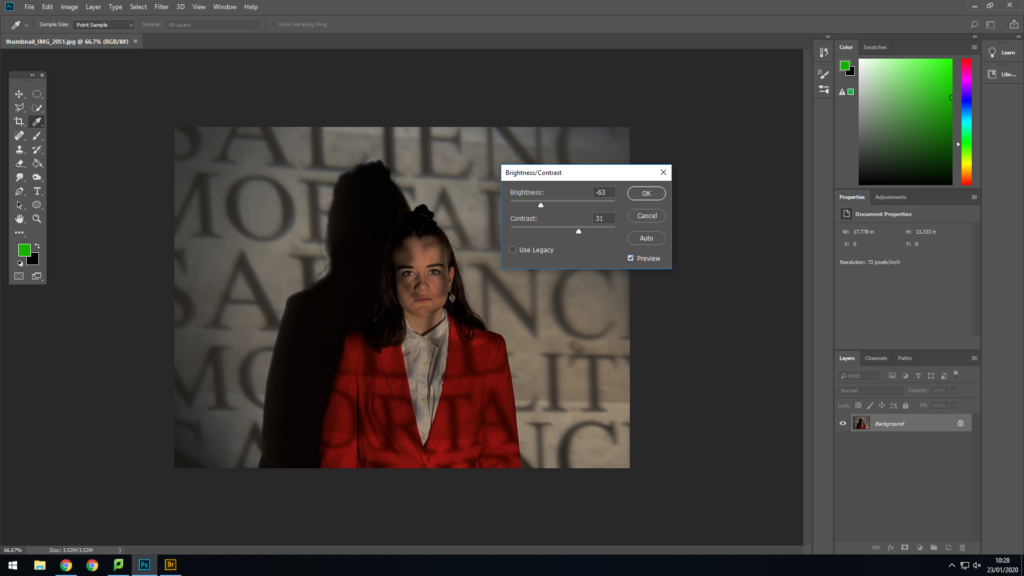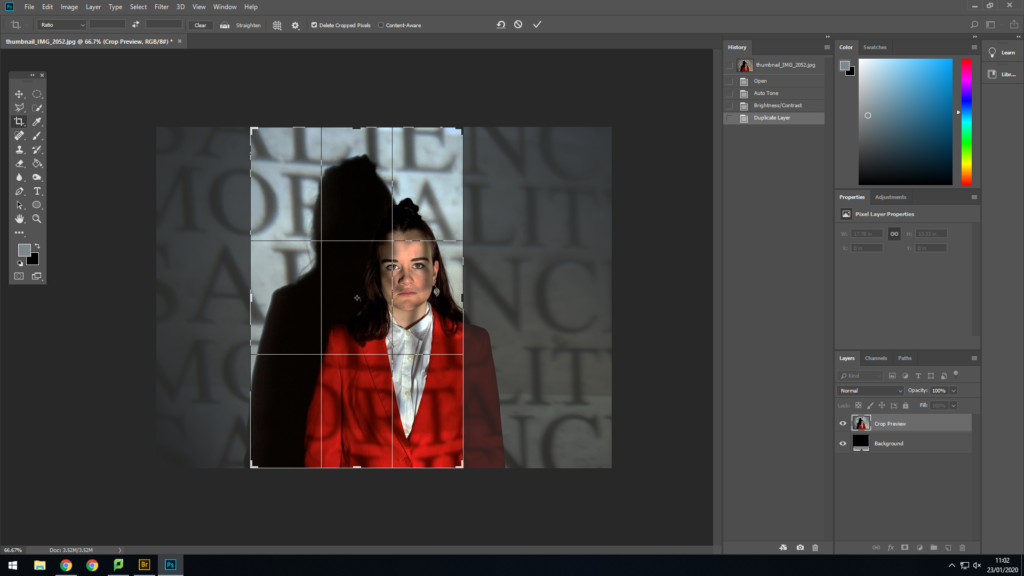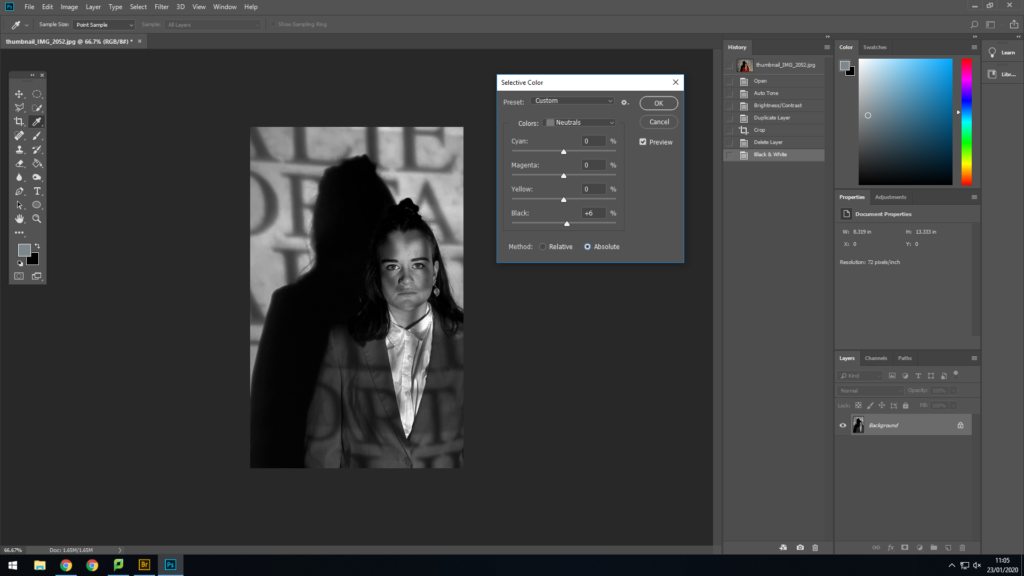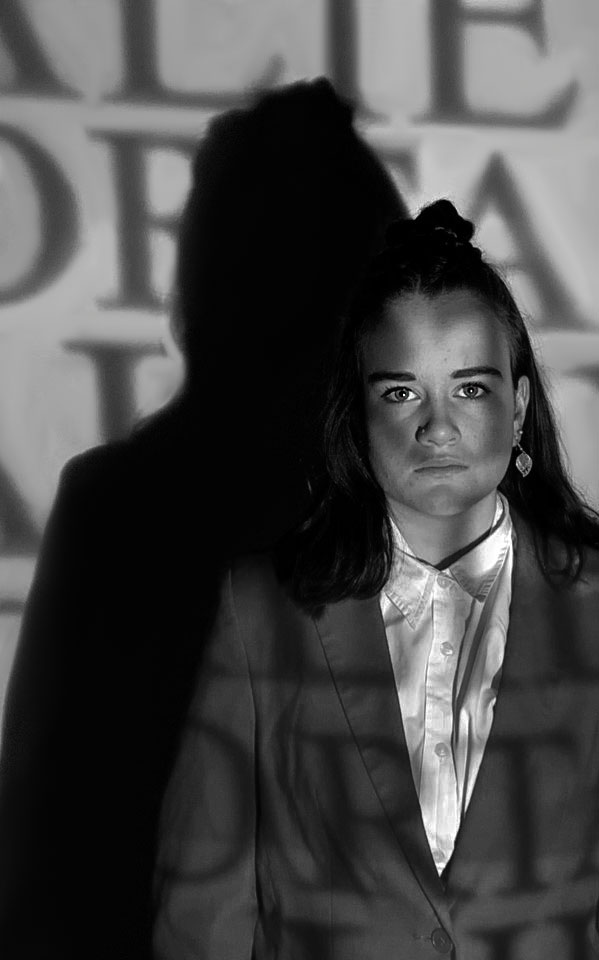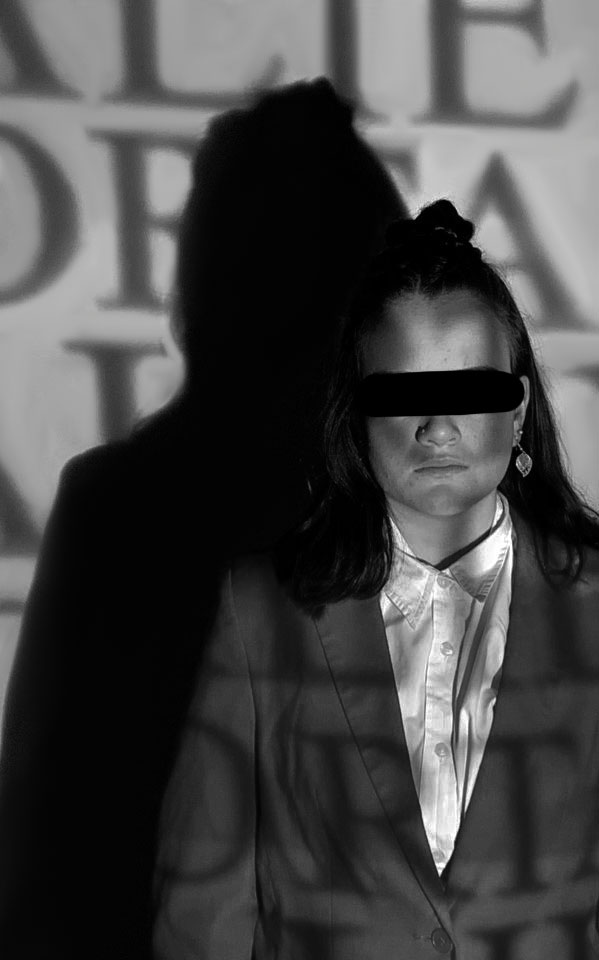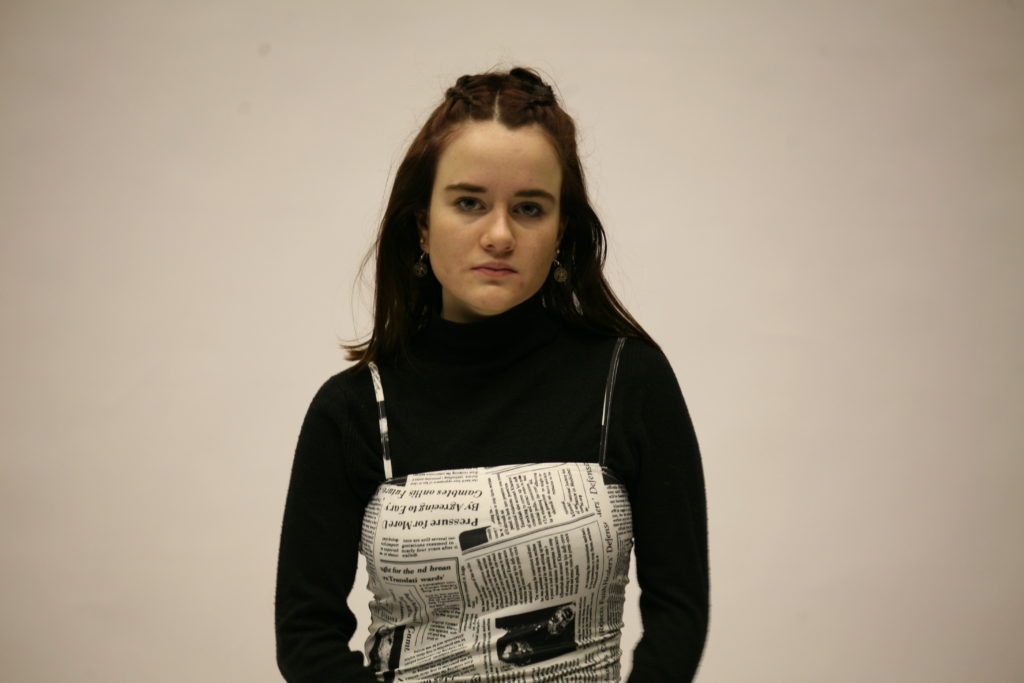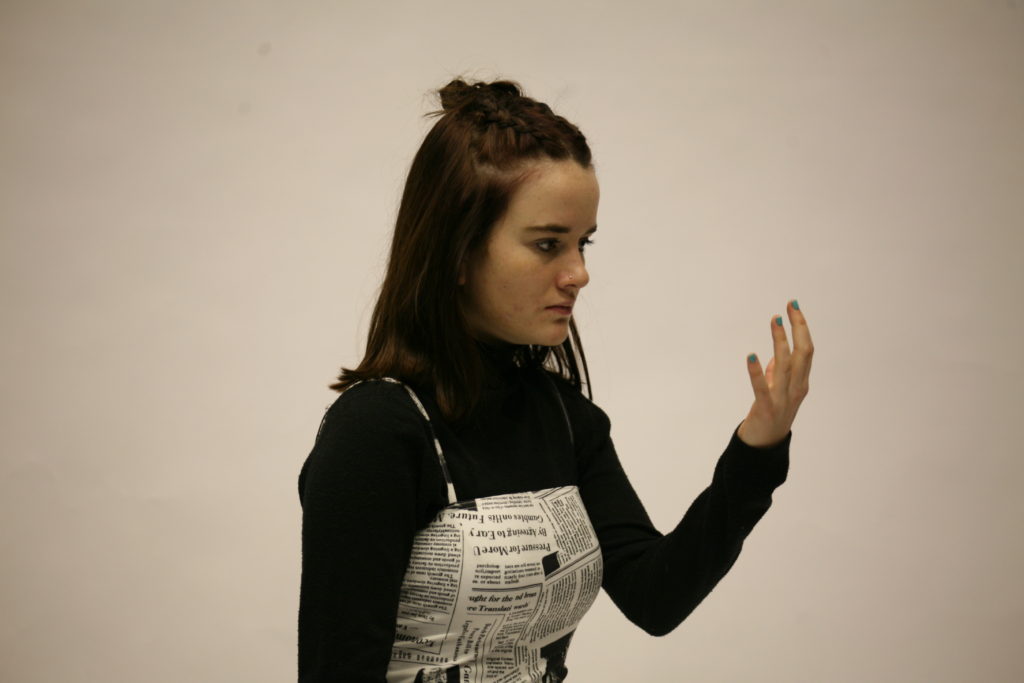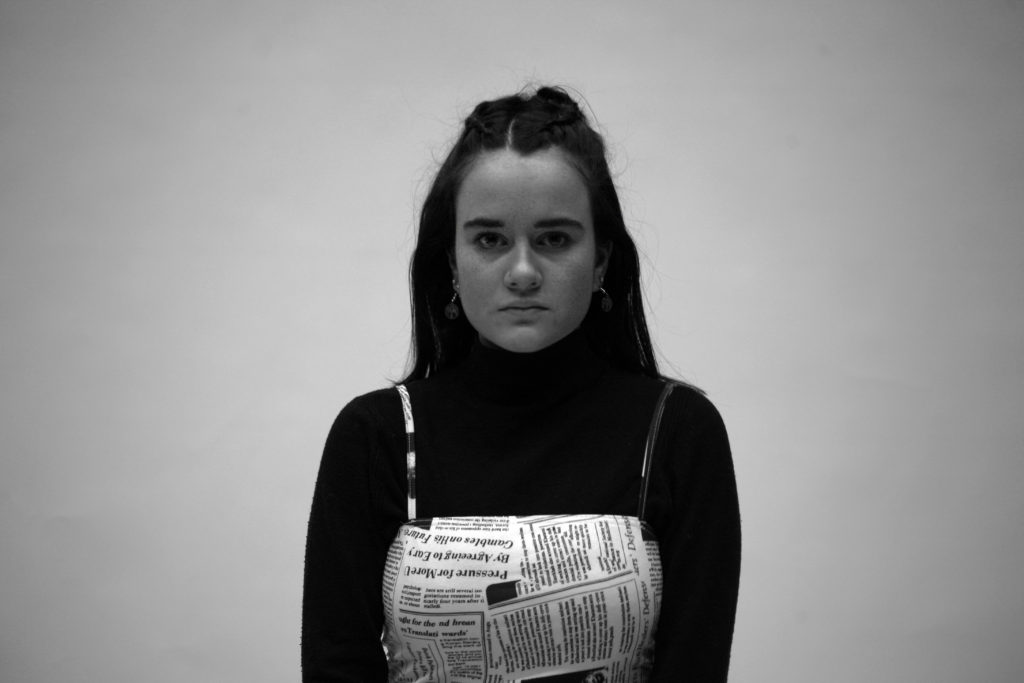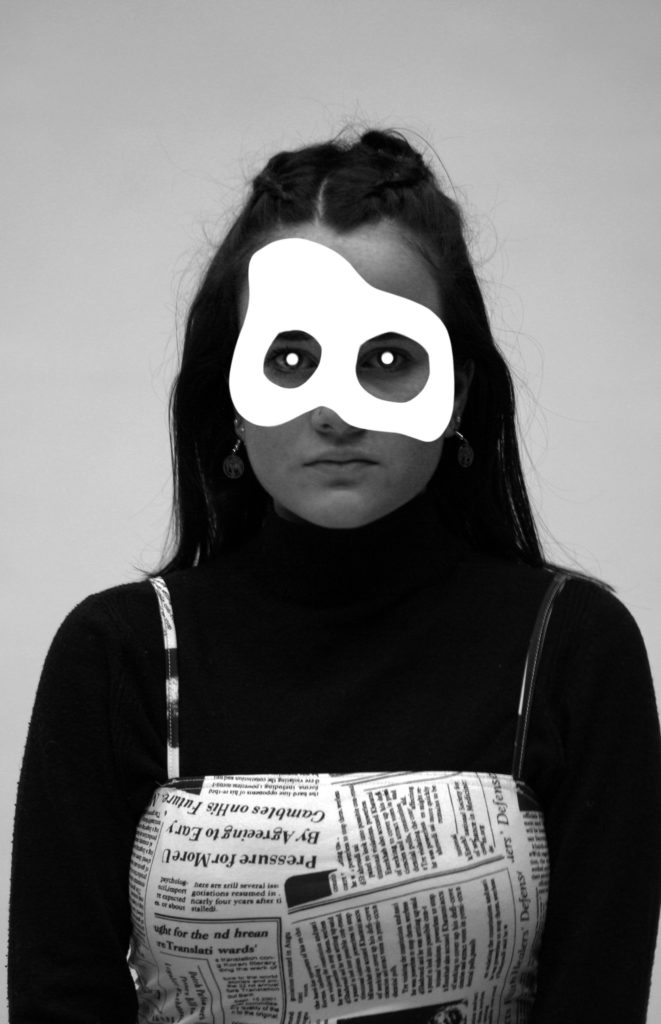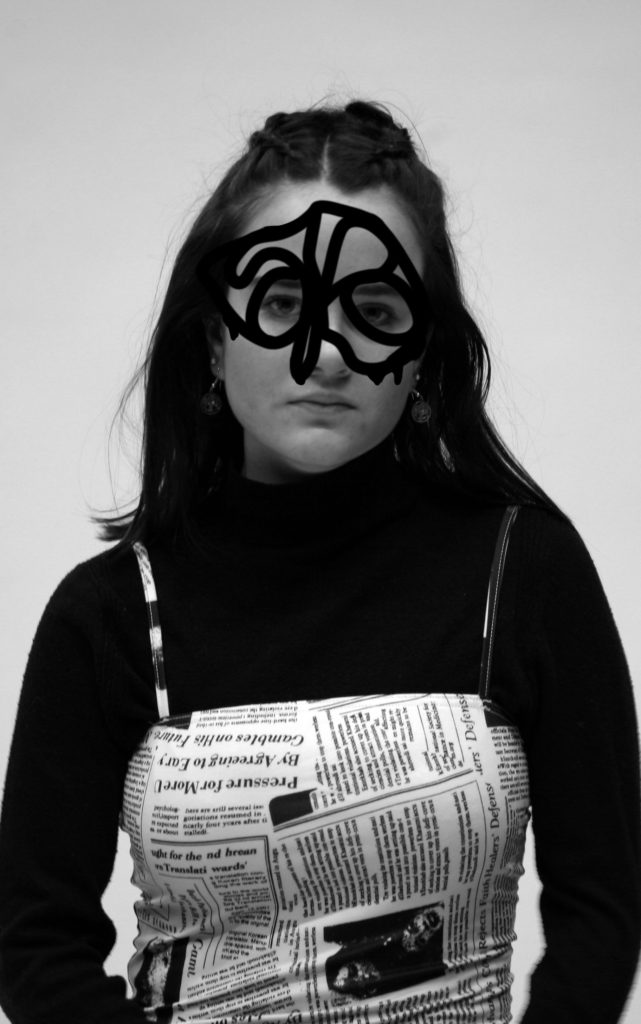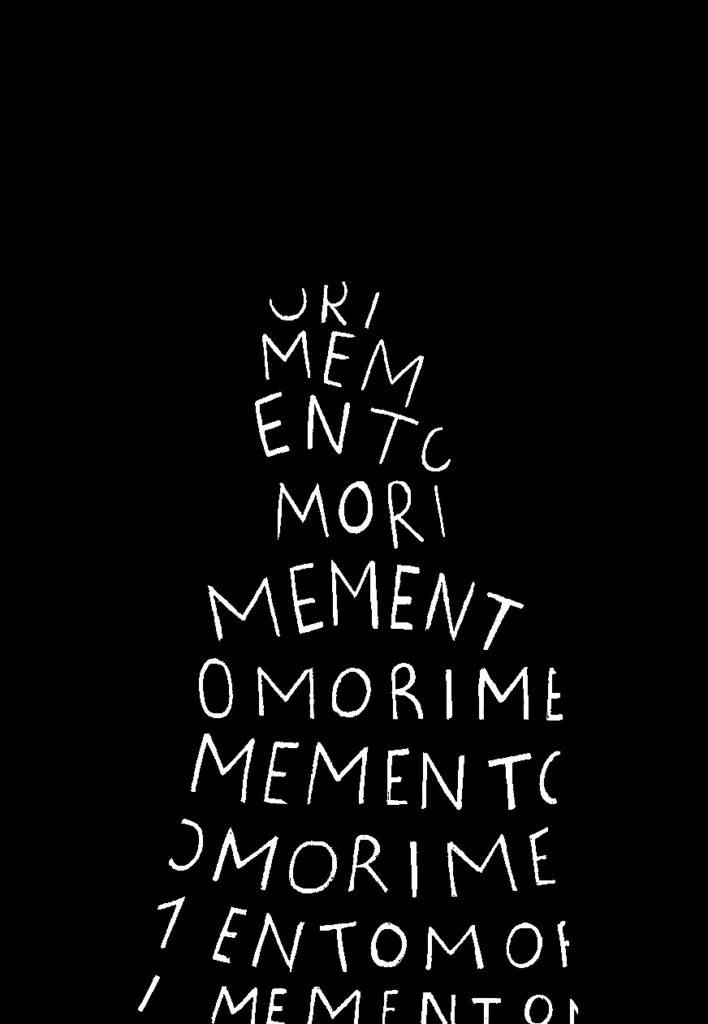Identity is who a person or group is, the way they think about themselves, the way they are viewed by the world and the characteristics that define them. This may include their personality, looks and/or beliefs.
Identity is created throughout a lifetime, but can be influenced by factors such as nationality, race, ethnic group, physical appearance, culture, talents, interests, language, and religion.
A lack of identity can be detrimental to an individual’s mental health, as identity relates to self-image, self-esteem and individuality.
Jesse Draxler (lack of identity)
Jesse Draxler is a modern portrait photographer, well known for his abstract, disturbing and slightly morbid head shots. He focuses on identity (or lack of) within his images, intriguing those who view it and leaving them wanting to figure out what’s beneath the art
Draxler uses mixed media to present his obscure state of mind and view of the world. His work is monochromatic, using techniques such as photo-montage and incorporating black paint in many of his pieces to achieve his desired outcome. Draxler’s work is dark, mysterious and perturbing, focusing mainly on a lack of identity and mortality as themes.
On his book ‘Misophonia’, Draxler personifies his art and his work as ‘a sociopath’, a person who is deranged, delusional and impulsive. He uses faceless figures to to represent his own identity and the emotions he has been dealing with his entire life. Torn between his past and frightening future, Draxler often feels detached from his own personal identity.
On ‘Terror Management’, Draxler further explores this theme of mortality, especially naming the gallery after the theory (TMT) that attempts to explain a type of defensive human thinking and behavior that stems from an awareness and fear of death.
Photo analysis

This image is a prime example of how Draxler embraces mortality and a lack of identity within his work. Working mainly in mixed media, he created this using a head-shot of his subject as a background and black paint.
The lighting in the image is very much unnatural, most likely two or three point lighting there’s no natural shadows. There’s a large tonal range within the image, ranging from the darkest tones of the pupils to the lightest tones in the background, creating a strong contrast between the two.
The patterns and textures of the image are conflicting. The paint itself has multiple textures: The wetter parts of the paint (top of the head) contrasts with the rougher strokes down the neck and the thicker paint on the subject’s face itself. These contradicting textures aid in directing the viewers eyes around the image. With the smoothness of the background carrying out a more passive role within the image, it allows the subject and the media surrounding them to have a more assertive part within the composition– leading the observer’s eyes around the subject multiple times.
The lack of eye-contact with the camera from the subject could connote a sense of anxiety, amplified by the paint which engulfs them. This wholly incorporates the theme of mortality/lack of identity as the paint could be an allegory for death, something completely out of control and inevitable to all humanity. This deterministic factor in all our lives can make many feel like they’ve lost their autonomy, leaving them feeling this anxiety with a sense of detachment from their identity.
A possible intention of this image may be to provoke morbid thoughts, specifically ones related to their own mortality, as the ambiguity of the image is disconcerting to those who inspect it. This is due to the conflict between how the shapes within the image are familiar (the paint and head-shot resembling a person-like figure), but the mystery behind it as the whole person is unrecognisable- if anyone was to naturally come across the subject they wouldn’t be aware.
Main focus- lack of identity (detachment from oneself)

Photoshoot Plans
One subject throughout.
SHOOT 1-
- Studio.
- Collecting images for photomontage.
- Different angles, Headshot+Half–body.
- Experiment with shutter speed (slower+more movement= disfigured subject).
- 2-point lighting.
SHOOT 2-
- Studio.
- Projector + clear acetate.
- Reds suit (red= danger,urgency).
- Normal lighting (All lights on).
- White background (words will show up more clearly).
SHOOT 3-
- Studio.
- For sociopathy (Holding a mask/pretending to).
- Normal lighting (All lights on).
Photoshoot 1
Photoshoot 2
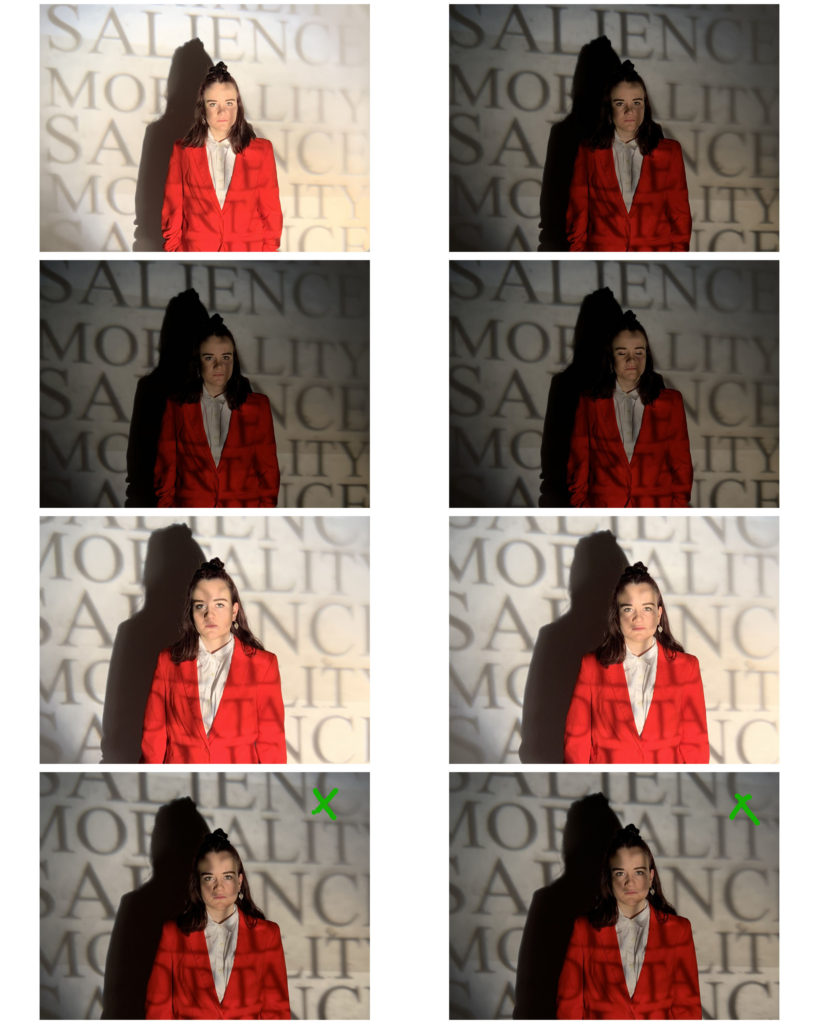
Photoshoot 3
Photomontage
Images to work with:

For each of these images, I converted the original photo to black and white and duplicated the layer. With the background copy, I increased the contrast and decreased the brightness to create a completely black background. I then erased the subject from this second layer to reveal the original, edited subject.
I printed out these series of images and created a collage using different sections of my subject’s face. I did this to represent my Multiple Personality aspect of the project on identity. The reasoning for this was to show how individuals with mental disorders (such as Bipolar disorder, Dissociate Identity Disorder and Borderline personality disorder) feel detached from their own identity. These people feel as though they lack free will and autonomy due to the idea that their disorder defines them as individuals. To amplify this imagery, my subject wore clothing with multiple faces printed on to it.

Slow shutter speed- Death anxiety
Using a black background and a slow shutter speed, I got my subject to wave their arms and move their head. This movement allowed for the creation of a skeleton-like figure, a metaphor for death. The blurred lines act as a representation of time and by having it surround the figure it aided me in portraying how many individuals feel as though time is momentary and fleeting- a reminder of their own mortality.
Alongside my inspiration from Draxler, converting the image to black and white allowed me to shift the focus of the viewer on to the figure, as well as maintain the theme of mortality- with darker tones and shadows having associations with death and grief.
Mixed media– Death anxiety
I decided to print the chosen half-body image and repeatedly painted over the subject the phrase ‘memento mori’, which represents an artistic reminder about the inevitability of death. Working back into this image on photoshop, I corrected the toning within the image and altered the background so it would be a single colour.
Having done this I used the threshold tool to focus predominantly on the phrase written out- the tool created an image with an outline of the subject, which I felt was a good, symbolic representation of the death of an individual (Leaving a sort of ‘shell’ of a person who was once there).
To amplify this imagery, I aim to present these images beside one another to portray the temporariness of humans. This links into the theme of identity as it further shows how mortality defines many people, with a select amount identifying as nihilists (and individual who believes that life is meaningless and rejects all religious and moral principles).
Clear Acetate and projector– Depression/death anxiety
I printed this phrase onto sheets of clear acetate and used a projector the project it onto my subject for the photoshoot. Mortality salience is the awareness by an individual that their death is inevitable. This term derives from the terror management theory (also linking to Draxler through his ‘Terror Management’ exhibition), and proposes that this awareness causes existential anxiety within the person. In relation to a person’s self-esteem and identity, this anxiety can be highly destructive- leading to possible mental health issues such as depression.
I created a duplicate layer and using the selective colour tool on photoshop, I enhanced the black projected writing and then erased the top layer accordingly to bring this out, without affecting the subject’s shadow and hair.
I decided I wanted to crop the image so as the keep the focus of the image on the subject. Cropping the image allowed a more sinister aspect of the image to come through- the shadow, which looms over the subject, making her look inferior. This conflict between the subject and her shadow, to me, represents how individuals hide many aspects of their identity from others (portrayed through the shadow figure) and feel overwhelmed by this as it’s something that they feel they can’t express or it will affect others’ perspective on themselves.
With the theme of ‘lack of identity’ I decided to remove the subject’s recognisable features (eyes and mouth) using a black brush tool on Photoshop, allowing the focus of the image to be on the letters and shapes surrounding the subject. By doing this, it also creates a clear link with my influential artist as Draxler disfigures the faces of many of his subjects.
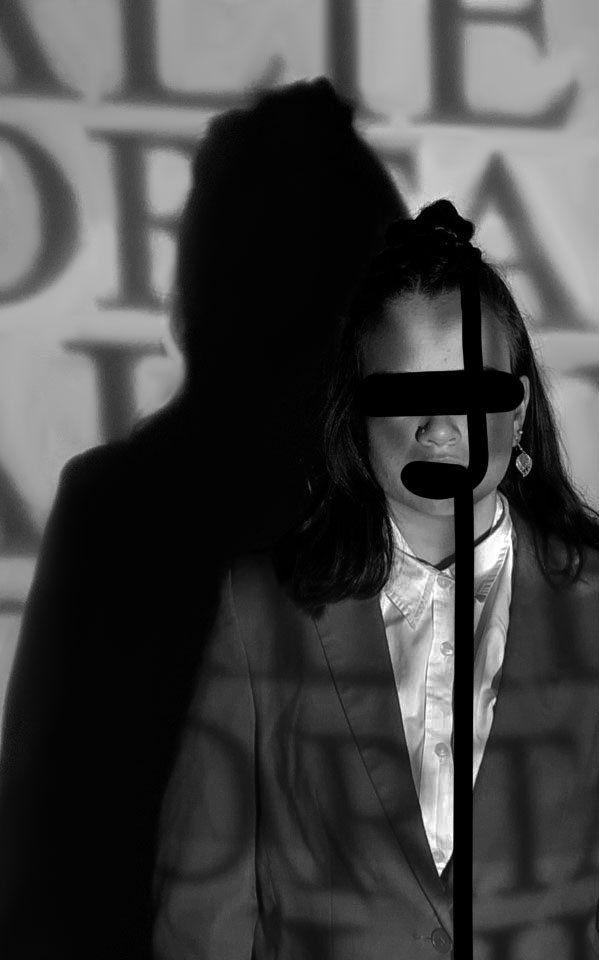
Sociopathy
Individuals with sociopathy disorder are disconnected from themselves in the sense that they lack emotions, such as empathy, and struggle with the understanding of others. I felt as though sociopaths fit into my theme of identity as they’re highly manipulative and deceiving people, who can turn out be a completely different person from who they say that they are- their personal identity is almost hidden. Their manipulative nature can be spotted by their constant switching back and forth between extreme charm and extreme threats, to get what they want.
I wanted to portray these deceiving characters to be cold and uninviting. To achieve this, I directed my subject to be expressionless during the shoot- having her make direct eye contact when facing the camera.
I also used the brush tool to depict an object used to cover the subject’s face to symbolise the ‘mask’ these individuals wear to fool those around them.
In an attempt to create a more ominous image, I also changed the colour of my subject’s pupils to match their mask, in turn recreating the unnaturalness and inhumane nature of Draxler’s own work.
I used the brush tool the create a messier-looking mask, represent the tumultuous mindset of those who suffer from sociopathy disorder. It also represents how their own identity is unclear and distracting to others.
I decided to crop these images to show only a half-body, reducing the negative space around the subject
Outcomes:

death anxiety 
multiple personality 
death anxiety 
death anxiety2 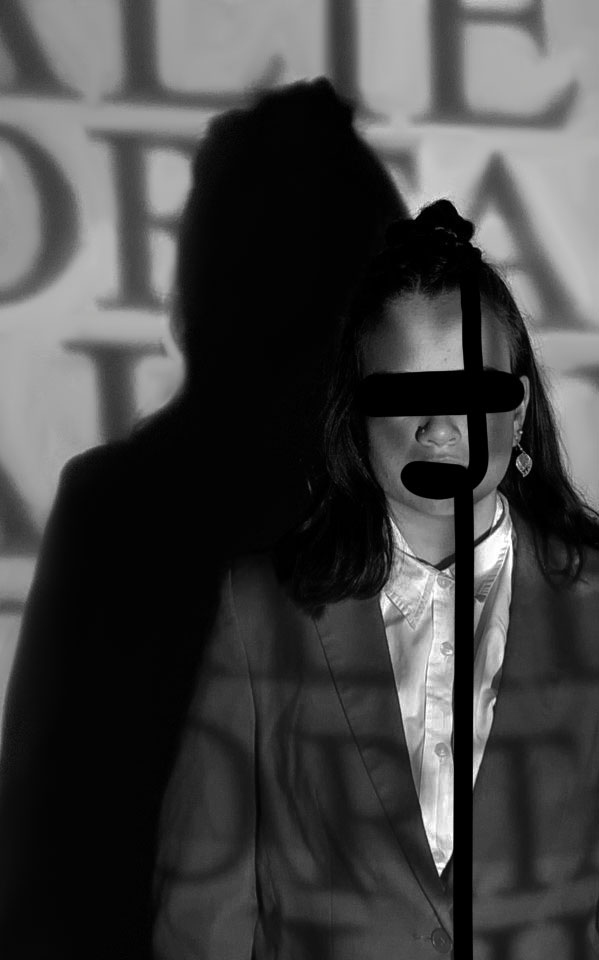
depression 
sociopathy2
Comparison to Draxler

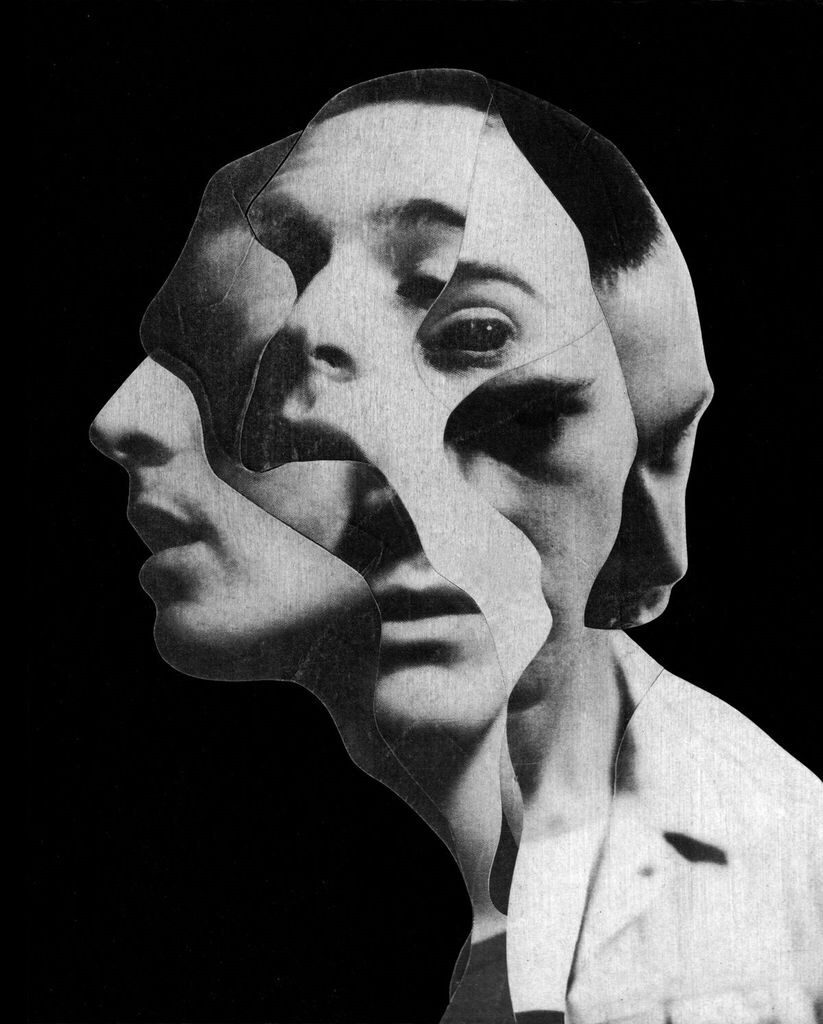
draxler
This particular piece of Draxler’s work inspired me to create my own photo-collage. I felt as though it perfectly portrayed how split-personality and multiple-personality disorders could be physically represented.

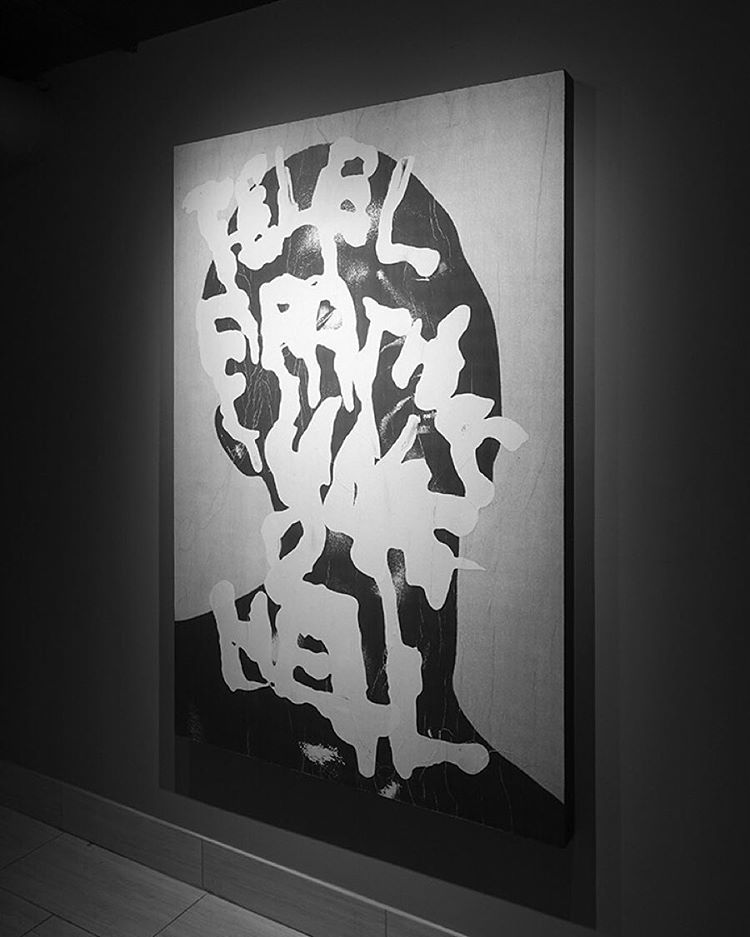
draxler 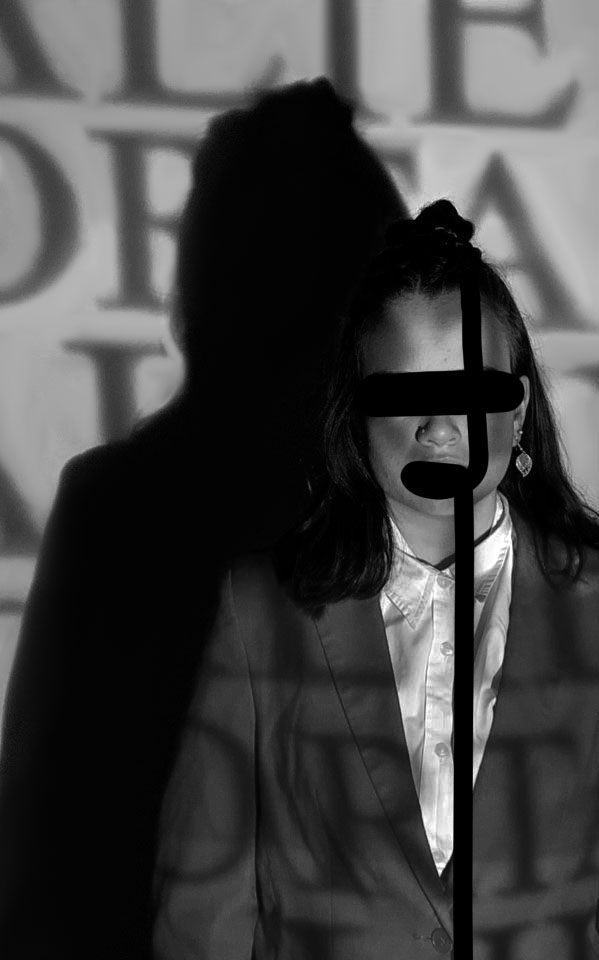
Looking at how Draxler painted over his work, it influenced me to incorporate different methods into my photo-shoots and editing, such as the projector and physical writing of words over my images. Although the methods I used are significantly different to those of Draxler, the outcomes are relatively similar.
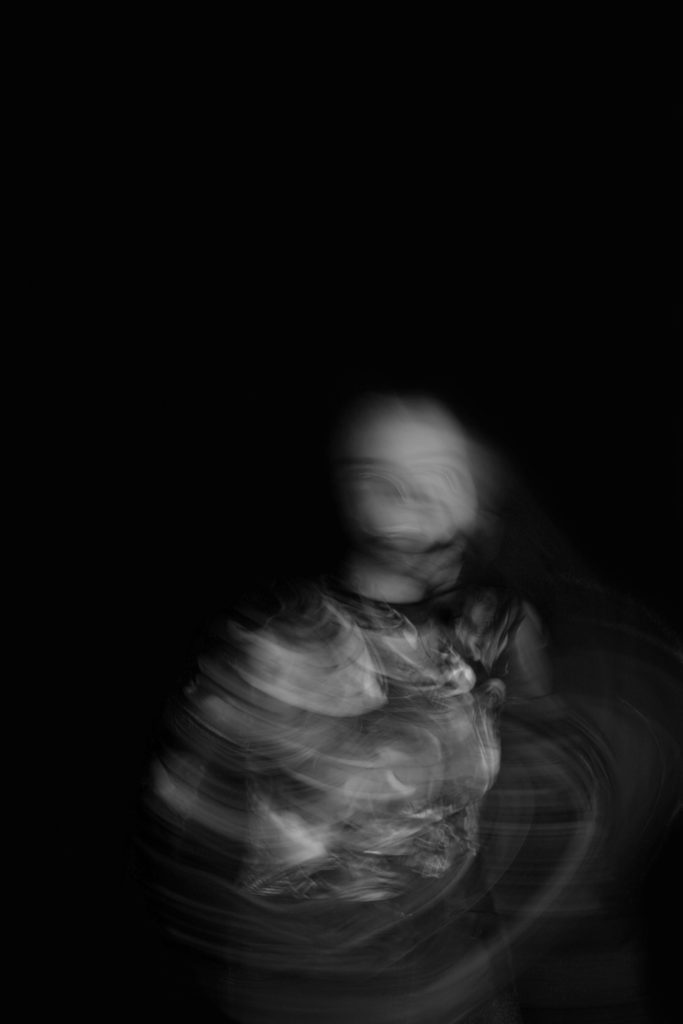
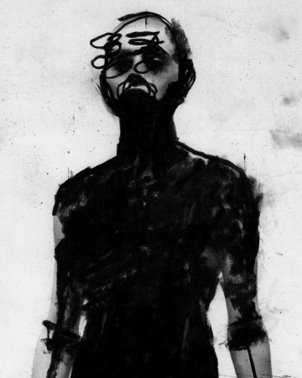
draxler
Draxler’s original image, to me, was considerably comparable to a skeleton. I wanted to create a similar piece of work using the camera only. I used a slow shutter speed and movement to remove features that made my person look alive (not too dissimilar to how Draxler removed the hair, eyes, mouth and other key features of his subject).
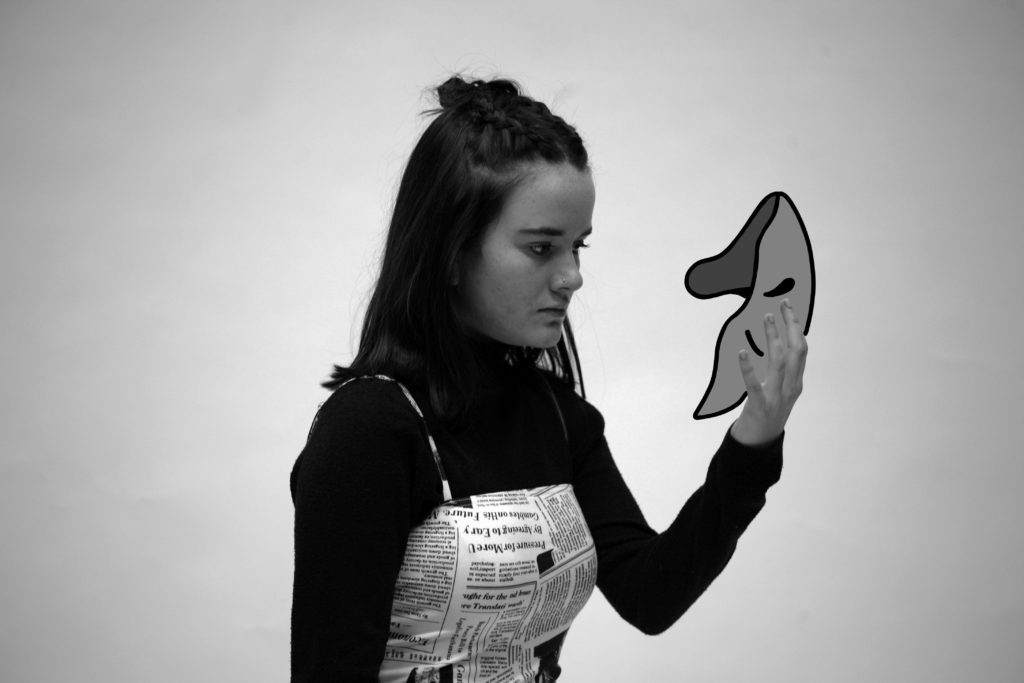

draxler
My aim with this piece wasn’t to replicate Draxler’s work. There is no evidence of actual photography within his original image but I was inspired by the mask to incorporate artwork into my own image, instead of completely hiding my subject’s face as he’d done.

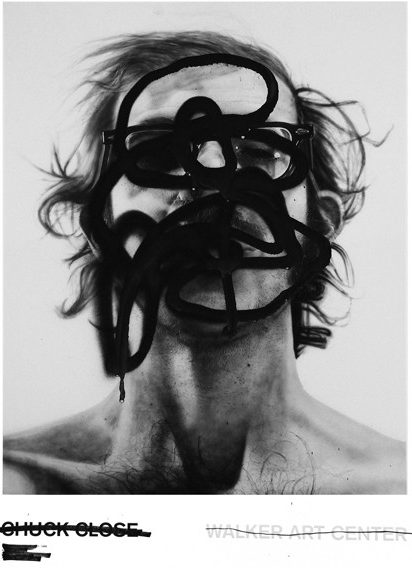
draxler
The messiness of Draxler’s piece resonated with me. It provoked the thought that no single person has a perfectly curated sense of self and identity. I presented my image under the term sociopathy and I feel it shows how even those who have developed a perfected fake identity, are also just as messy and confused as the rest of humanity.
Final Images
Evaluation
I feel as though this project has been overly successful. By having one word (‘Identity’) it allowed me to form a broad range of ideas- focusing on the lack of identity due to mental illnesses such as depression, multiple personality disorder and sociopathy, along with detachment from personal identity due to death anxiety.
I focused on Jesse Draxler as an influential artist as his fascination with mortality and other morbid themes within his work fit well with my concepts. His work inspired me to try new techniques and resulted in me taking a more abstract approach towards my work. I experimented with shutter speed, projectors and mixed media to create my final outcomes. Experimenting during the editing process using the threshold tool and selective colour tool (before converting to black and white) allowed me to create highly contrasted and striking images.
However, a drawback on this project is the effectiveness of my techniques. For example, printing off my images to make the photo-collage resulted in an unintentionally, grainy image when re-uploaded to the blog. In future, to avoid this, I will print using higher standard photo paper to get the best quality prints to work on when using mixed media.
Additionally, my own time management led to be a hindrance to my final outcomes. If I had organised myself by gathering needed materials/props for my shoots and editing processes with sufficient time, I may have more higher quality work to reflect upon.
Virtual Gallery
